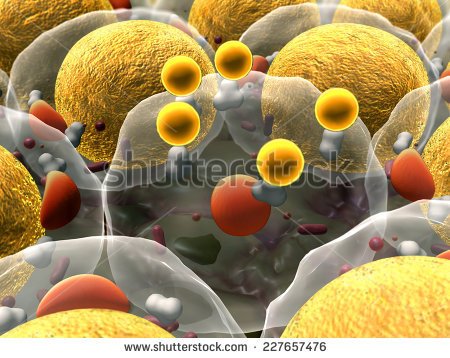




-
Fatty Acids
- The organic acids that contribute to the triacylglycerols were first identified in animal fats which led to their name, but we know that these materials are found in vegetable oils as well.
- There are many different fatty acids, which can combine with glycerol to form triacylglycerols; these tend to be identified by the number of carbon atoms they contain.Although the carbon chains vary in length, the atoms are arranged in a regular, ordered way, with the organic acid group attached to one end. The atoms which signify an organic group are: one carbon atom, two oxygen atoms and one hydrogen atom-often written as COOH and sometimes referred to as a carboxyl group for example:
| H.COOH | Methanoic acid (formic acid) |
| Ch3COOH | Ethanoic acid (acetic acid) |
| CH3CH2COOH | Propanoic acid |
| CH3CH2Ch2CH2COOH | Butanoic acid |
| CH3CH2Ch2CH2COOH | Pentanoic acid |
| CH3CH2CH2CH2CH2COOH | Hexanoic acid |
Table 2.2 Short Chain Fatty Acids
- The names of the acids used above are the up-to-date versions; you may recognise formic acid and acetic acid, which are the older names for the first two on the list.
- Organic acids are not so corrosive and agrressive as mineral acids.
- The fatty acids which form the triacylglycerols found in vegetable oils have much longer chains of carbon atoms than those in Table 2.2 and so are bigger and heavier molecules. A shorthand method has been devised to enable the formulae for these compounds to be written down easily. All that is necessary is to count the number of carbon atoms present, thus pentanoic acid becomes a C5 acid and hexanoic acid a C6 acid.
- The fatty acids of interest to us are generally in the range of C12 to C24.
- Clearly, with such long chain fatty acids reacting with glycerol the resulting triacylglycerols are very large molecules. So large in fact that they cannot easily penetrate the skin, unlike the comparatively smaller molecules that make up essential oils.
- Humans are not capable of detecting the odour of any molecule bigger than C20
- Reference is often made to the fatty acid content of vegetable oils. It is important to recognise that these fatty acids. Are not simply dissolved in the oils(ie present in an uncombined state and therefore able to take part in reactions). They are acids, which have already reacted with the glycerol to form the appropriate triacylglycerol, and so are present as 'bonded' units.
- The commonest fatty acid unit found bonded in carrier oils is derived from octadecanoic acid with 18 carbon atoms and a formula of:
- CH3CH2CH2CH2CH2CH2CH2CH2CH2CH2CH2CH2CH2CH2CH2CH2CH2COOH
- How much easier to use the shorthand form C18 for this acid.
- Octadecanoic acid used to be known as stearic acid, and because of this name many people thought that it came only from animal sources, but this is not necessarily the case. Vegetable stearic acid is widely available, and although use of the modern name could help to dispel any misinterpretation, the common name is the most frequently used.
Reference:Carrier Oils For Aromatherapy & Massage: Len Price with Ian Smith& Shirley Price
